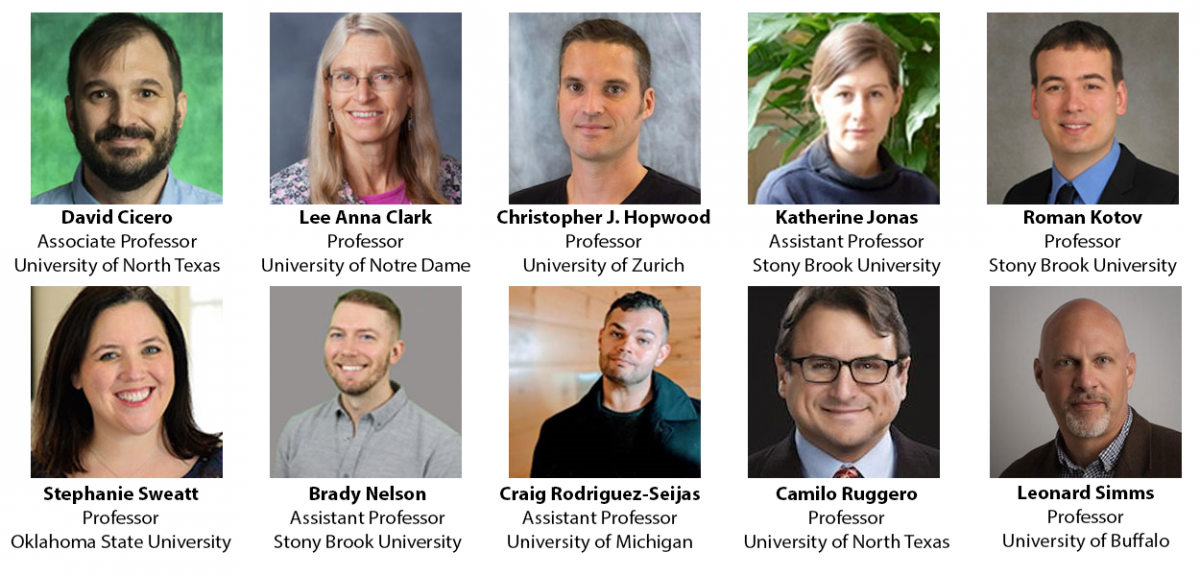Integrating HiTOP into Clinical Practice
2022 Workshop
November 11-12, Friday & Saturday
8am - 11am CST
Registration Link: https://tinyurl.com/hitopworkshop
Introduction:
The Hierarchical Taxonomy of Psychopathology (HiTOP) is a new dimensional alternative to categorical diagnostic systems like the DSM and ICD. The Clinical Translation Workgroup is offering a two-day, six-hour workshop to provide training in applying HiTOP principles to clinical practice. Trainees who complete the workshop will learn how to assess and conceptualize symptoms though a HiTOP lens and integrate findings into treatment planning and monitoring. The workshop will also review how to apply principles to work with diverse and underserved populations. Training will include hands-on interactive discussion of cases, review of evidence and limits for the clinical utility of HiTOP relative to other systems, and practical considerations such as billing and reporting. Presenters are educators, clinicians, and researchers from the HiTOP consortium.
Presenters:

For more information on the presenters, visit here.
SCHEDULE:
Day 1
1. HiTOP Overview (8:00AM - 8:50AM)
Presenters: Roman Kotov, Ph.D. Stony Brook University, NY, Camilo Ruggero, PhD, University of North Texas, David Cicero, PhD., University of North Texas
Learning objectives:
- Understand the HiTOP model and relevant evidence
- Discuss benefits and limitations of prevailing diagnostic systems
- Compare and contrast categorical and dimensional nosologies
10-Minute Break
2. HiTOP Instruments and Scales (9:00AM - 9:50AM)
Presenter: Leonard Simms, Ph.D. State University of New York at Buffalo, Katherine Jonas, PhD., Stony Brook University, NY
Learning objectives:
- Describe instruments and protocols consistent with HiTOP model
- Discuss specific scale interpretations
10-Minute Break
3. HiTOP and Case Conceptualization (10:00AM - 11:00AM)
Presenter: Lee Anna Clark, Ph.D., Brady Nelson, PhD, Stony Brook University, NY
Learning objectives:
- Integrate HiTOP perspective (e.g. dimensional, hierarchical) into case conceptualization
- Distinguish between role of traits and symptoms
- Discuss how to provide feedback to improve insight and therapeutic alliance
DAY 2
4. HiTOP and Treatment Planning (8:00AM - 9:20AM)
Presenter: Stephanie Mullins-Sweatt, Ph.D. Oklahoma State University & Chris Hopwood, PhD, University of Zurich.
Learning objectives:
- Identify empirically supported treatments across spectra and levels of the HiTOP model
- Develop treatment targets, goals, and interventions based on a HiTOP profiles.
- Monitor and adjust treatment progress based on HiTOP-related outcomes.
10-Minute Break
5. Working with Diverse or Underserved Populations (9:30AM -10:40AM)
Presenter: Craig Rodriguez-Seijas, PhD, University of Michigan
Learning Objectives:
- Discuss factors that impact applicability of HiTOP model for underrepresented groups as well as contextual multicultural factors that can impact scores.
- Develop individualized case conceptualizations with a focus on context through identity intersectionality.
- Recognize the importance of being mindful of stigma and how it may manifest cognitively/behavioral among cultural minorities.
10-Minute Break
6. Wrap up/Questions and Answers (10:50AM- 11:00AM)
Presenters: Roman Kotov, Ph.D. Stony Brook University, NY, Camilo Ruggero, PhD, University of North Texas, David Cicero, PhD., University of North Texas
Extra after workshop: Installing HiTOP-DAT in your practice
File attachments: